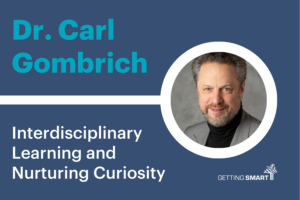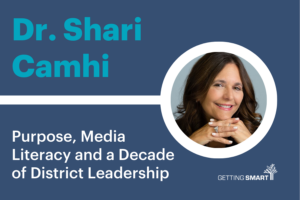Successful Content Curation Strategies in Higher Education

By Blake Beus
Is curation just another trendy buzzword in academic circles, or can it be a smart strategy to help manage the massive changes taking place across the learning and educational environment?
Today’s learners are constantly bombarded by an overwhelming amount of information. Organizations that curate content effectively are seeing the benefits of more engaged, connected learners who have a stronger understanding of how the material they are learning applies to the real world.
Content curation is just one element of the ongoing shift away from traditional, formal instructional approaches to a wider acceptance of informal learning, both in business and education.
The Growth of Informal Learning
Informal learning is far from a new phenomenon, but our perception of it has changed significantly over the past few decades, largely due to the explosion of the Internet. Businesses frequently reference the “70-20-10 rule” of workplace learning as they strive to implement training programs or employee onboarding that is highly experiential and collaborative. To ensure learners are fully prepared for the challenges they will face on the job, learning and development professionals recognize the need to facilitate access to a wide range of relevant information and learning experiences.
K-12 and higher education institutions are also shifting their focus away from the old paradigm of transmitting knowledge from faculty to students and moving toward educational approaches that guide students through a process of exploration, discovery, and participatory learning. Rather than relying exclusively on traditionally published materials, instructors often curate their own textbooks.
Content curation is one strategy that helps bridge the gap between formal and informal learning. But successful curation requires more than simply collecting and sharing information. These tips will help you provide curated content that delivers value to your learners.
Strategies for Successful Content Curation
- Provide context. Content without relevance has no value. Help your learners understand why the information they are learning is important and how it connects to the world outside the classroom.
- Wander off the page. Besides books and journal articles, helpful resources could include blogs, wikis, discussion boards and even Twitter. To really engage your learners, don’t forget to look beyond the written word and leverage the diverse forms of media available on the web.
No matter the topic, there’s likely to be a YouTube or TED video, podcast episode, or SlideShare presentation available that ties back to some element of your course content. You may also be able to find existing eLearning presentations, software simulations, study guides, or practice activities that would be useful to your students.
- Involve your learners. Perhaps the most effective use of curation in the classroom is when learners become curators themselves. Content curation requires a wide range of higher-order thinking skills, including evaluating, synthesizing, and analyzing. Independently or in groups, ask your students to search for external content, share it with their cohort, and explain how it is relevant to the material discussed in class.
There are several online tools designed specifically for sharing of curated content, including Curatr, Scoop.it and TheHubEdu. Common social networking applications such as Pinterest and Twitter can also be used for this purpose.
Helping students integrate course content into life outside the classroom prepares them for future academic and career success.
For more, see:
- Interaction With Digital Content: 5 Actions to Look For In Your Students’ Online Experience
- Getting Smart Podcast | The Role of OER in 21st Century Classrooms
- 3 Steps for Educators to Take Advantage of OERs
Blake Beus is the Director of Learning Solutions at Allen Communication Learning Services. Follow him on Twitter: @BlakeBeus.
Stay in-the-know with all things EdTech and innovations in learning by signing up to receive the weekly Smart Update.







0 Comments
Leave a Comment
Your email address will not be published. All fields are required.